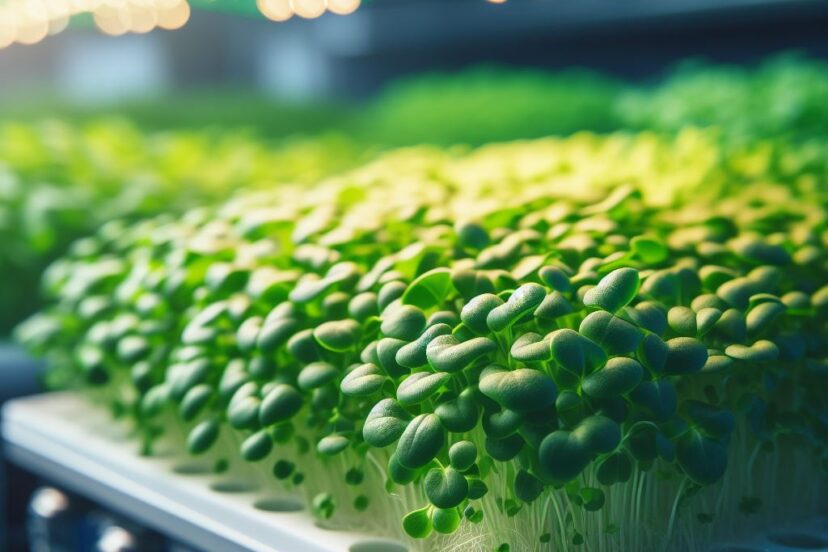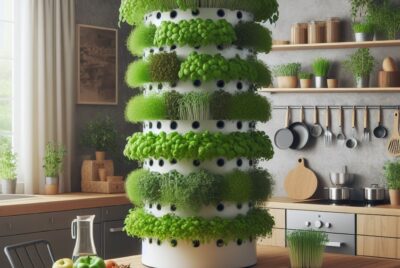Hydroponic Microgreens: Cultivating Nutritious Delights
Introduction
I have dedicated countless hours to exploring the fascinating realm of hydroponic microgreens. These tiny, vibrant greens offer a burst of flavor and a plethora of nutrients, making them an invaluable addition to any diet. In this article, I will delve deeper into the art of cultivating hydroponic microgreens, providing helpful suggestions and reasons for my recommendations.
Benefits of Hydroponic Microgreens
Hydroponic microgreens possess numerous benefits that have made them increasingly popular among health-conscious individuals and gardening enthusiasts. Firstly, these greens are a nutritional powerhouse. Packed with essential vitamins, minerals, and antioxidants, they offer a concentrated dose of goodness in every bite. In fact, studies have shown that hydroponic microgreens can contain significantly higher levels of nutrients compared to their mature counterparts.
Another advantage of hydroponic microgreens is their compact nature, which allows for year-round cultivation even in limited spaces. Whether you live in a small apartment, have a modest backyard, or simply want to make the most of your indoor areas, hydroponic microgreens can be grown in trays or containers that take up minimal space. They are a perfect solution for urban dwellers or those with limited gardening areas.
Choosing the Right Microgreen Varieties
When it comes to selecting the right microgreen varieties for hydroponic cultivation, there is a world of possibilities to explore. Each variety offers a unique flavor profile and nutritional composition, allowing you to create a diverse range of culinary experiences. Some popular choices include basil, broccoli, kale, radish, sunflower, and pea shoots. However, don’t be afraid to venture beyond the familiar and experiment with less common varieties to expand your taste horizons.
Consider your taste preferences, market demand, and growth characteristics when choosing microgreen varieties. Are you a fan of spicy flavors? Radish and mustard microgreens might be perfect for you. Do you enjoy the subtle sweetness of herbs? Try basil or cilantro microgreens. By selecting a diverse array of varieties, you can create stunning and flavorful dishes that cater to different palates.
Setting up a Hydroponic System
Before diving into the cultivation process, it’s important to set up a suitable hydroponic system for your microgreens. There are various hydroponic systems to choose from, including nutrient film technique (NFT), deep water culture (DWC), and vertical systems. Each system has its own advantages and considerations, such as space requirements, ease of use, and maintenance.
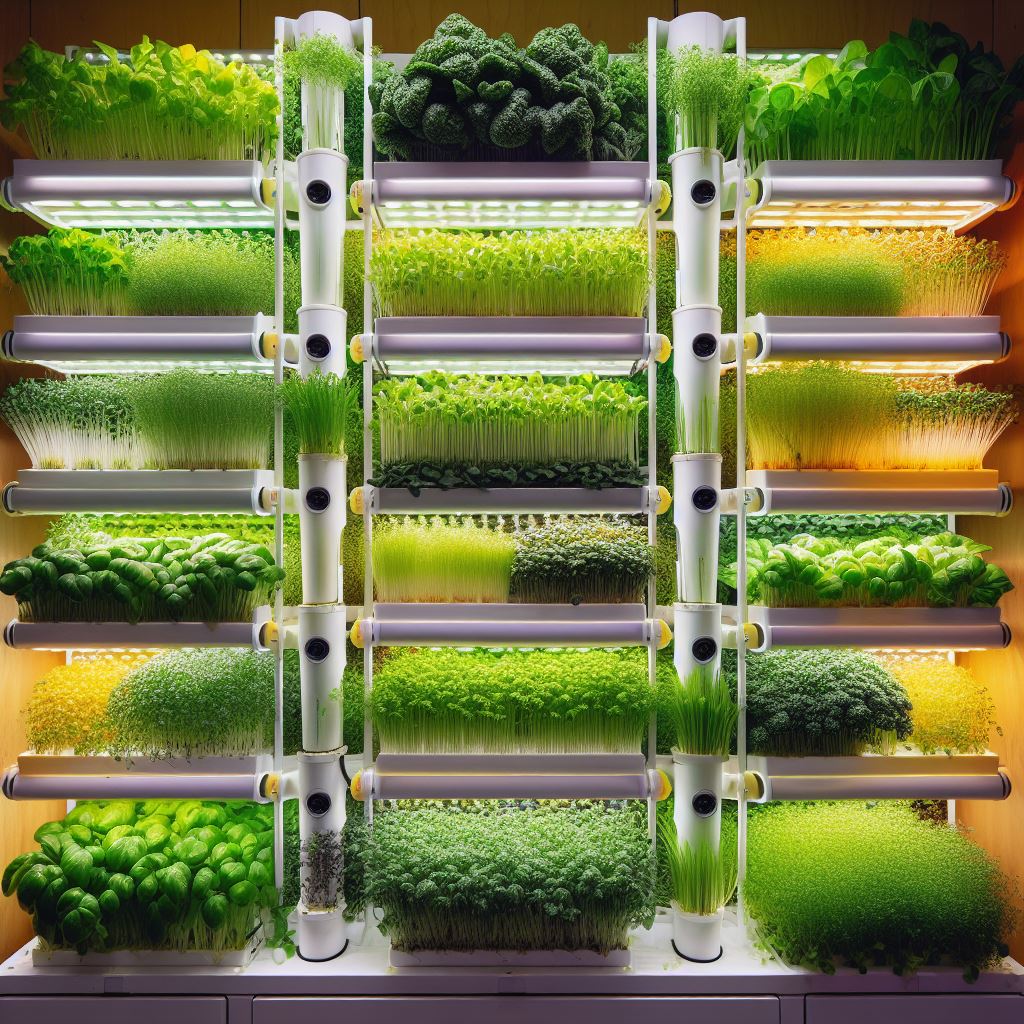
Regardless of the system you choose, certain components are essential for successful hydroponic microgreen cultivation. These include trays or containers to hold the plants, a growing medium to support their growth, a water reservoir, a nutrient solution, and a reliable light source. When assembling your hydroponic system, ensure that it is sturdy, well-designed, and capable of providing adequate support and nourishment for your microgreens.
Germination and Growth Process
The journey of hydroponic microgreens begins with the process of germination. High-quality seeds specifically intended for microgreen cultivation are essential for optimal results. These seeds can be easily sourced from reputable suppliers or specialized stores. It’s advisable to choose organic and non-GMO seeds to ensure the highest quality and purity.
To kickstart the germination process, pre-soaking or moistening the seeds can be beneficial. This step helps to initiate water absorption, leading to quicker and more uniform germination. Once the seeds are ready, they can be spread evenly over the growing medium in the trays or containers. Gently press them into the medium, ensuring good contact for efficient nutrient absorption.
Maintaining optimal growing conditions is crucial for the healthy development of hydroponic microgreens. Here are some key factors to consider:
- Lighting: Adequate lighting is essential for photosynthesis and proper growth. Place your hydroponic system in an area where the microgreens can receive 12-16 hours of light daily. LED grow lights are a popular choice for their energy efficiency and ability to provide the specific light spectrum needed for optimal growth.
- Temperature: Most microgreens thrive in temperatures between 65-75°F (18-24°C). Maintain a consistent temperature within this range to promote healthy growth. Avoid exposing the plants to extreme temperature fluctuations or drafts, as they can stress the plants and hinder their development.
- Humidity: Microgreens prefer a moderately humid environment. Aim for a relative humidity level of around 40-60%. You can achieve this by using a humidity dome or cover to create a more controlled and humid microclimate around the plants.
- Nutrient Solution: Hydroponic microgreens rely on a balanced nutrient solution for their growth and development. Follow the manufacturer’s instructions or consult a hydroponic expert to create the appropriate nutrient solution for your specific microgreen varieties. Monitor the pH levels regularly to ensure they remain within the optimal range for nutrient uptake.
- Watering: Hydroponic systems require a careful balance of water and oxygen. Overwatering can lead to root rot and other issues, while underwatering can stunt growth. Water the microgreens when the top layer of the growing medium feels slightly dry to the touch. Maintain moisture without waterlogging the medium.
Harvesting and Enjoying Hydroponic Microgreens
One of the joys of cultivating hydroponic microgreens is the ability to harvest and enjoy the fruits of your labor relatively quickly. The ideal time to harvest microgreens is when they have developed their first true leaves, usually 7-14 days after germination. At this stage, they are tender, flavorful, and packed with nutrients.
To harvest, use clean scissors or a sharp knife to cut the microgreens just above the soil level. Handle them gently to avoid bruising or damaging the delicate leaves. Once harvested, microgreens are best enjoyed immediately for maximum freshness and nutritional value.
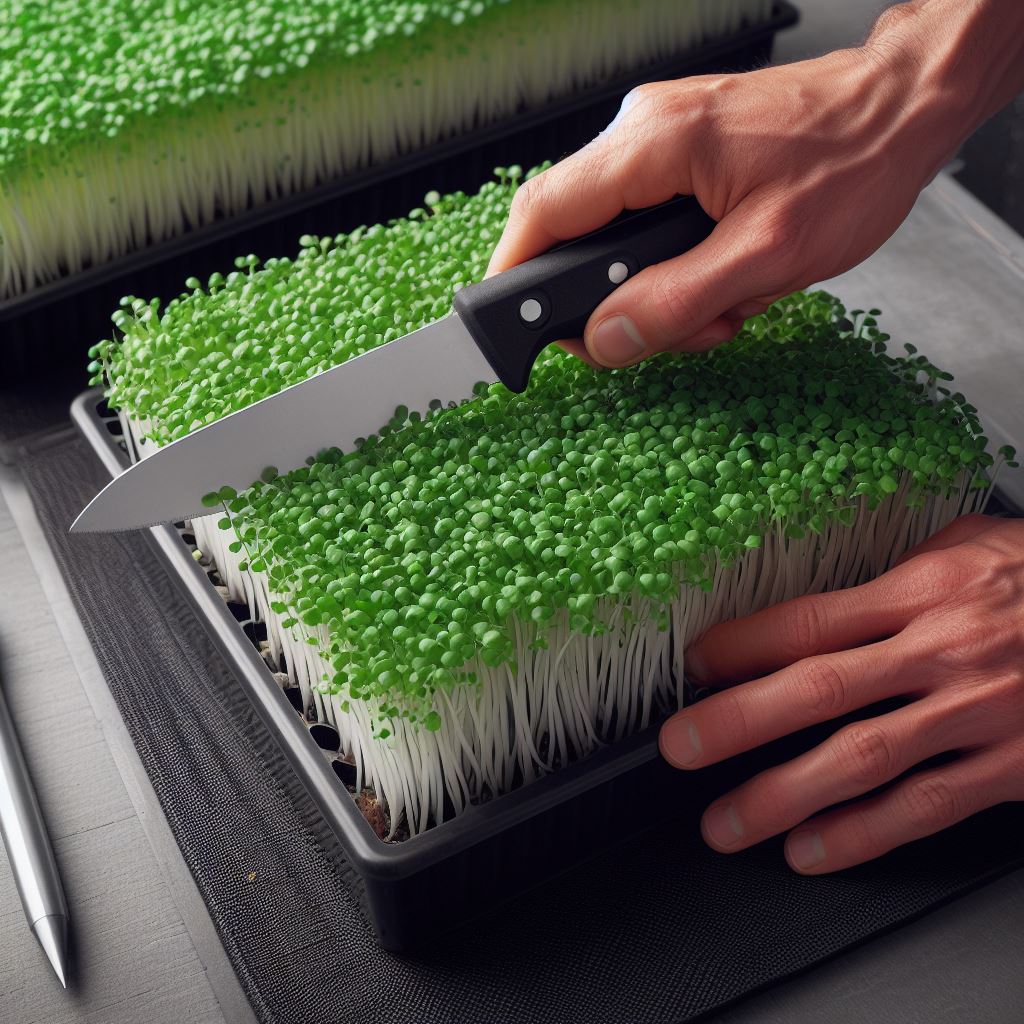
There are countless creative ways to incorporate hydroponic microgreens into your meals. Sprinkle them over salads, soups, or omelets for a burst of color, flavor, and nutrition. Use them as a topping for pizzas or sandwiches, or garnish your favorite dishes to add a touch of elegance and freshness. The possibilities are endless, limited only by your imagination.
Troubleshooting Common Challenges
While hydroponic microgreens are relatively easy to grow, challenges may arise along the way. Here are a few common issues you may encounter and some possible solutions:
- Pests: Keep a vigilant eye for common pests such as aphids, fungus gnats, or spider mites. Introduce beneficial insects like ladybugs or use organic pest control methods to manage infestations.
- Diseases: Proper hygiene and cleanliness are crucial to prevent the spread of diseases. Ensure your equipment and growing environment are clean, and avoid overwatering, which can create a damp environment conducive to disease development.
- Nutrient Imbalances: Monitor the pH and nutrient levels of your solution regularly. Adjust the nutrient solution as needed to maintain the optimal balance for healthy growth. Signs of nutrient deficiencies or excesses include yellowing leaves, stunted growth, or discoloration.
- Environmental Factors: Be mindful of temperature fluctuations, humidity levels, and airflow around your hydroponic system. Sudden changes in temperature or inadequate ventilation can stress the microgreens and impact their growth.
By addressing these challenges promptly and implementing appropriate solutions, you can ensure the continued success of your hydroponic microgreen cultivation.
Expanding Your Hydroponic Microgreen Adventure
As you gain confidence and expertise in cultivating hydroponic microgreens, you may want to explore further possibilities and expand your growing repertoire. Here are a few ideas to take your hydroponic journey to the next level:
- Microgreen Blends: Create unique flavor combinations by growing different microgreen varieties together. Blend spicy radish microgreens with mild and crisp pea shoots for a delightful contrast of flavors and textures. Experiment with various combinations to discover your favorite blends.
- Microgreen Smoothies and Juices: Harness the nutritional power of microgreens by incorporating them into your smoothies or juices. Add a handful of vibrant greens like sunflower or kale microgreens to your favorite fruit or vegetable blends for an extra dose of vitamins and antioxidants.
- Microgreen Pesto and Sauces: Elevate your culinary creations with homemade microgreen pesto or sauces. Replace traditional basil with basil microgreens or blend cilantro microgreens with garlic, lemon juice, and olive oil for a zesty and nutritious twist.
- Microgreen Infused Oils and Vinegars: Infuse your oils and vinegars with the essence of microgreens. Place a handful of microgreens, such as basil or cilantro, into a bottle of high-quality olive oil or vinegar. Allow them to infuse for a few weeks, and enjoy the vibrant flavors in your dressings and marinades.
- Sharing the Joy: Spread the joy of hydroponic microgreens with your friends, family, and community. Share your excess harvest with others, host workshops to teach others about hydroponic gardening, or even consider starting a small business selling your homegrown microgreens.
Conclusion
Hydroponic microgreens provide an exciting and rewarding journey into the world of indoor gardening. With their intense flavors, vibrant colors, and exceptional nutritional value, they have captured the attention of enthusiasts and health-conscious individuals alike. By following the suggestions and recommendations in this article, you can embark on a successful hydroponic microgreen cultivation adventure.
Remember to choose the right microgreen varieties, set up an appropriate hydroponic system, and provide optimal growing conditions. Harvest your microgreens at the right time and explore a variety of culinary uses to savor their unique flavors and textures. Troubleshoot common challenges promptly, and don’t be afraid to experiment and expand your hydroponic horizons.
So, embrace the world of hydroponic microgreens, and let your green thumb flourish. Cultivate these nutrient-rich delights, create culinary masterpieces, and share the joy of growing your own vibrant and flavorful miniature greens.
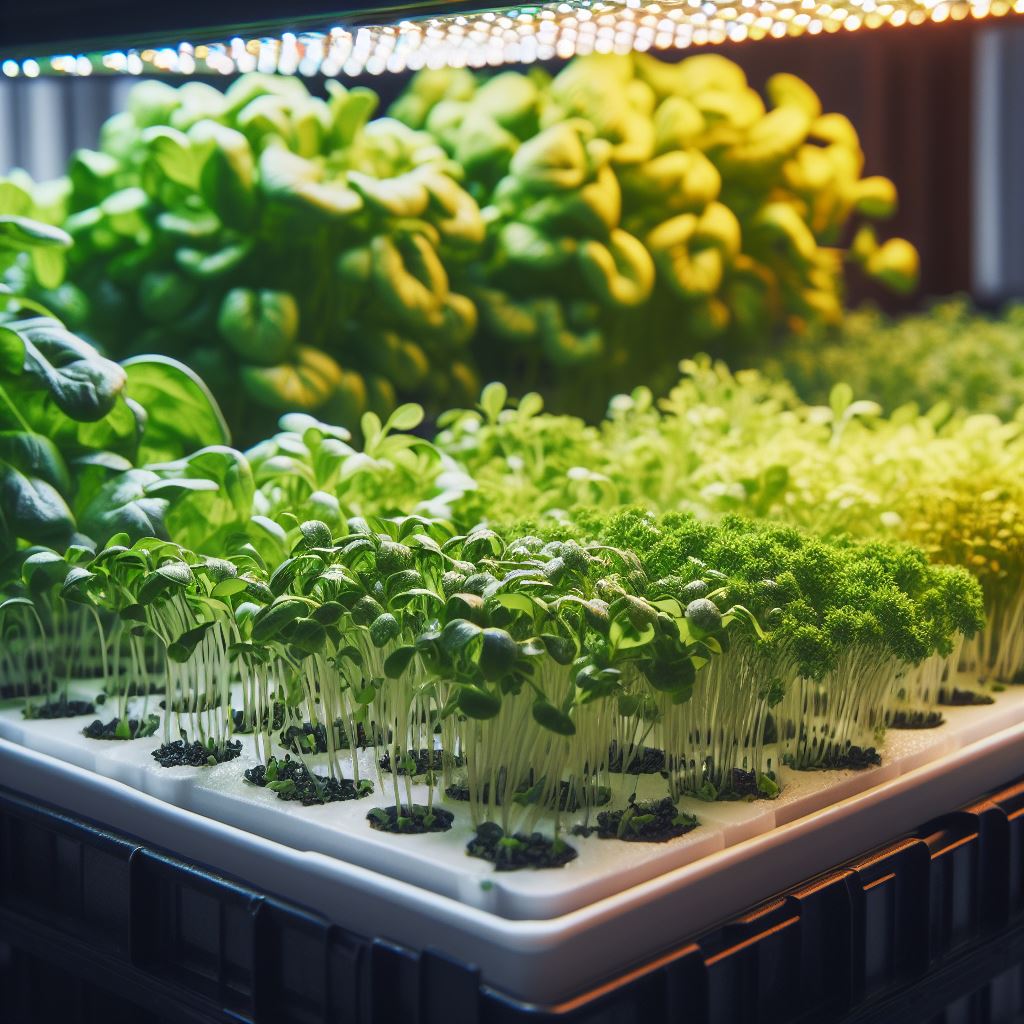
FAQs (Frequently Asked Questions)
1.Can I grow hydroponic microgreens without a hydroponic system?
While hydroponic systems offer many benefits, you can also grow microgreens in soilless mediums like coco coir or vermiculite. However, using a hydroponic system provides better control over nutrient delivery and water retention.
2. What are the best microgreens for beginners to grow hydroponically?
Beginners may find success with easy-to-grow microgreens like sunflower, radish, or pea shoots. These varieties have straightforward germination and growth processes, making them ideal for novices.
3. Is it necessary to use a pH meter for my nutrient solution?
Monitoring pH levels is crucial for hydroponic success. While not strictly necessary, using a pH meter ensures that your nutrient solution remains within the optimal range for nutrient absorption, leading to healthier microgreens.
4. Can I use tap water for my hydroponic system?
It is essential to consider the quality of your tap water before using it. Tap water with high mineral content or chlorine can negatively affect your microgreens. Using filtered or dechlorinated water is recommended for better results.
5. How do I prevent mold growth on my microgreens?
To prevent mold, ensure proper airflow and avoid overcrowding the microgreens. Maintain appropriate humidity levels and avoid overwatering, as excess moisture can encourage mold growth.

